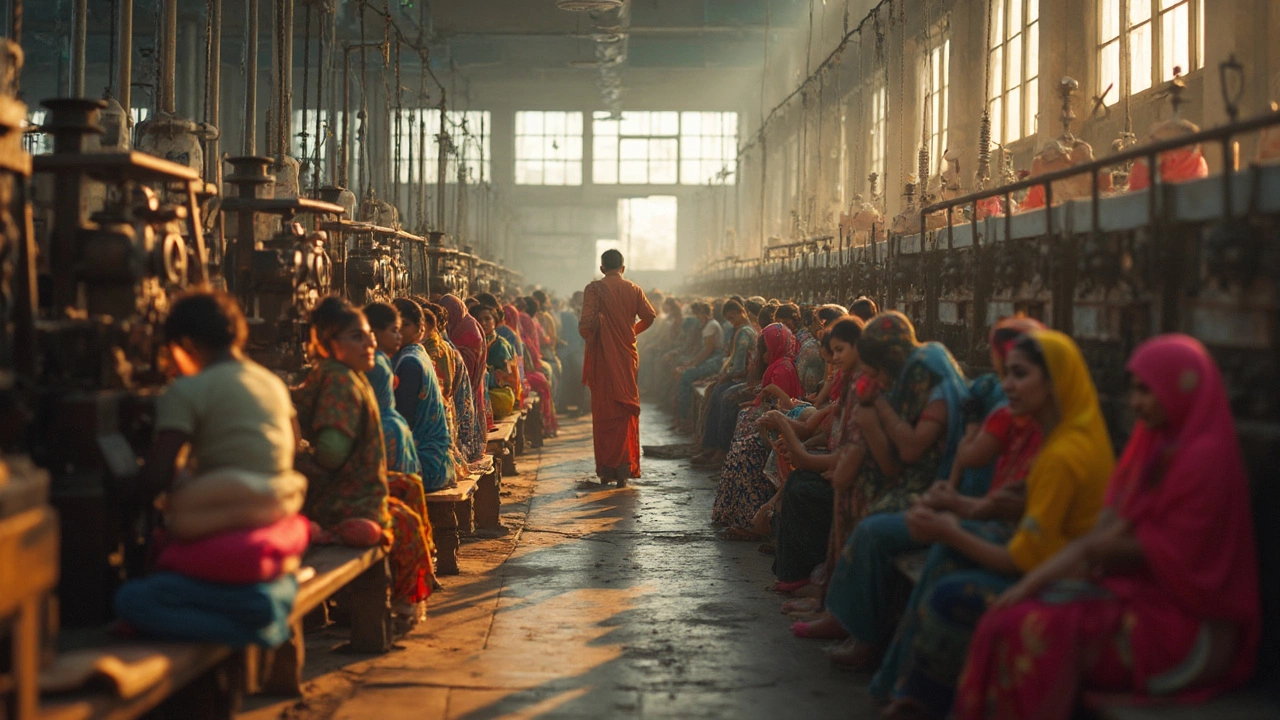Textile Production: Trends, Leaders, and Sustainable Practices
When you explore textile production, the process of converting raw fibers like cotton, wool, or synthetics into usable fabrics and finished goods. Also called fabric manufacturing, it underpins the Indian textile industry, a massive sector that fuels domestic consumption and exports worldwide. Companies such as Arvind Limited, India’s largest textile firm known for diversified product lines and a strong sustainability focus illustrate how scale and innovation drive modern textile manufacturing, the suite of operations that include spinning, weaving, dyeing, and finishing. If you’re curious about how textile production is reshaping India’s economy, keep reading.
At its core, textile production encompasses three key stages: spinning the fiber into yarn, weaving or knitting the yarn into fabric, and applying finishes that add color, texture, or performance. These stages form a linked chain, so the efficiency of one directly impacts the next – a classic example of a supply‑chain dependency. In practice, manufacturers must balance machine speed, energy use, and waste management, which is where modern data‑driven planning tools become essential. The result? Lower costs, faster turnaround, and a smaller carbon footprint – all critical in today’s competitive market.
Why Understanding Textile Production Matters
Knowing the inner workings of textile production helps you evaluate everything from product quality to pricing. For instance, a mill that invests in automated looms can deliver tighter stitch counts, which means higher durability for garments. On the flip side, firms that ignore eco‑friendly dyes may face regulatory penalties and lose market share to greener brands. Sustainability isn’t just a buzzword; it shapes procurement decisions, influences design trends, and drives consumer preferences toward labeled “organic” or “recycled” fabrics.
Major players illustrate how different strategies play out. While Arvind Limited leans on scale and advanced R&D, Reliance Industries leverages its vast petrochemical base to produce synthetic fibers at low cost, feeding both domestic apparel makers and export markets. Smaller firms often specialize in niche segments such as technical textiles for automotive or medical applications, proving that the industry isn’t a monolith but a mosaic of capabilities.
Data from recent surveys shows that India hosts over 450,000 textile firms, ranging from family‑run handloom units to multi‑billion‑dollar integrated mills. Export figures reveal that cotton yarn and blended fabrics dominate overseas shipping, yet the fastest‑growing segment is sustainable fabrics, which saw double‑digit growth in the last two years. These numbers highlight a shift: buyers are demanding traceability, low‑water processes, and certifications like GOTS or Oeko‑Tex.
Technology is the engine behind these shifts. Digital pattern design, AI‑guided quality inspection, and IoT‑linked looms enable real‑time adjustments, cutting waste by up to 20 %. Meanwhile, circular economy models are gaining traction, with companies turning post‑consumer textile waste into regenerated fibers for new collections. Understanding how these innovations intersect with traditional production steps gives you a clearer picture of where the industry is heading.
All this context sets the stage for the articles below. You’ll find deep dives into the biggest Indian textile firms, trends that will dominate 2025, and practical tips on navigating sustainability challenges. Whether you’re an investor, a supply‑chain manager, or just curious about how your shirt is made, the collection offers actionable insights that build on the foundation laid here.
